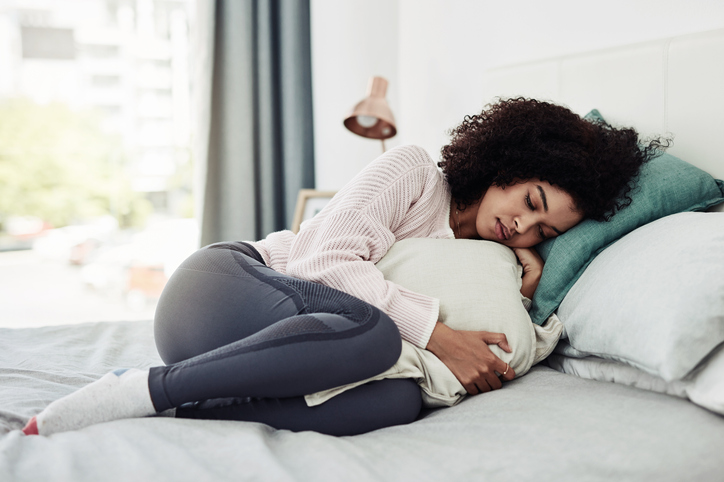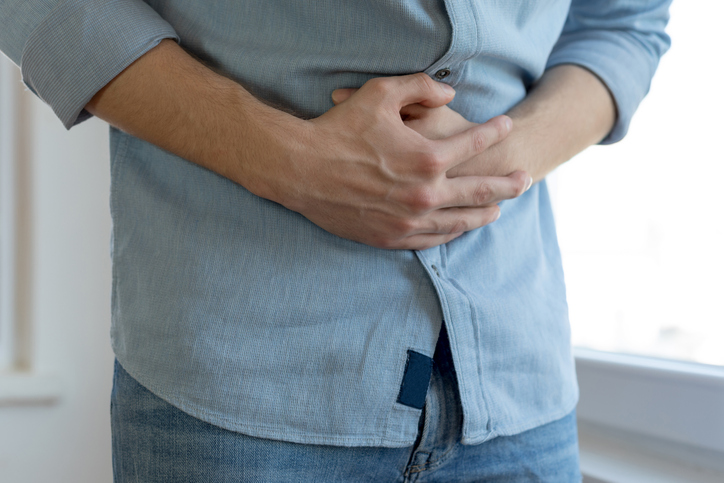Pain
At Home Treatments for Menstrual Pain

What is menstrual pain?
Menstrual pain, or dysmenorrhea, can occur in females when the uterus sheds its lining (usually on a monthly basis in premenopausal women). Pain may be experienced in the lower abdomen during the few days preceding menstruation and during menstruation.

Over-the-counter medications
Non-steroidal anti-inflammatory drugs (NSAIDs) and acetaminophen over-the-counter pain-relieving medications may help reduce menstrual pain. These oral medications block the effects of prostaglandins. They work best if taken prior to menstruation and continued until menstrual pain eases or the menstrual cycle is complete. Taking NSAIDS with food helps prevent an upset stomach.

Heat therapy
A heating pad or hot water bottle applied to the pelvic area and/or lower back can ease the pain associated with menstruation. The warmth relaxes the uterine muscles which reduces pain and contractions. A warm bath or hot towel may also be used. Individuals should be sure the applied heat is not too hot as it could burn the skin.

Physical activity
A regular exercise regimen, especially prior to the start of menstruation cycle, often reduces menstrual pain. During the menstrual cycle, gentle exercises, such as walking, should replace vigorous exercise.

Massage
Massaging the lower back and/or abdomen eases pain by reducing muscle tension. Relief is often immediate and lingers after the massage. Raising the legs or lying with the knees bent helps with the pain of uterine contractions.

Dietary changes
Avoiding certain foods and drinks, such as fatty, sugary or salty foods, reduces inflammation which aids in pain reduction due to menstruation. Alcohol, carbonated beverages, highly processed foods and caffeine should be avoided. Increasing the intake of fiber and plant based foods is beneficial, and increasing water intake reduces bloating. Drinking warm or hot liquids increase blood flow to the skin which relaxes muscles. Foods high in calcium reduce muscle cramping. Boron, a mineral, helps the body absorb calcium which reduces menstrual pain.

Vitamins and supplements
Calcium can reduce muscle cramping. The recommended dosage is 1,000 milligrams (mg) per day. Other vitamins and supplements that are beneficial include, but are not limited to, the following:
- Vitamin B-6
- Vitamin B-1
- Vitamin E
- Omega-3 fatty acids
- Magnesium
- Thiamine
*Note: It is important to talk with a health care provider before adding any vitamins and supplements to the diet.

Relaxation & yoga
Relaxation techniques and yoga are beneficial as they calm the body. Individuals can also engage in guided relaxation. Yoga relaxes the muscles which reduces muscle spasms.

Other treatments
Transcutaneous electrical neural stimulation (TENS) interferes with pain signals before they reach the brain. Adhesive pads are attached to the skin while light electrical impulses travel through the electrodes. Using a TENS unit causes the body to release endorphins.
Having an orgasm also releases endorphins. Endorphins are the “feel good” chemicals in the body that decrease the perception of pain.






